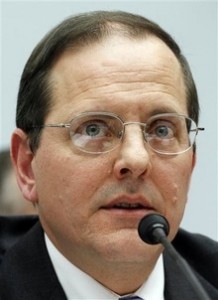After weeks of speculation and debate, the Federal Housing Finance Agency’s (FHFA) Acting Director, Edward DeMarco, has finally offered some specifics on a possible revamp of the agency’s Home Affordable Refinance Program (HARP).
Speaking at the American Mortgage Conference in North Carolina on Monday, DeMarco said the FHFA is considering options on how to expand HARP’s reach.
“HARP is not a mass refinancing program. It was designed to address a particular segment of borrowers with loans guaranteed by the enterprises,” DeMarco said. “FHFA is carefully reviewing the mechanics of the HARP program to identify possible enhancements that would reduce barriers for borrowers already otherwise eligible to refinance using HARP.”
Launched in 2009, HARP was intended to assist four to five million homeowners with underwater mortgages. If the mortgage had an LTV ratio between 80 percent and 125 percent, HARP would allow a refinancing of the troubled mortgages with a rate set by the mortgage originator.
In the two-plus years since, though, only 838,000 borrowers have taken advantage of the program.
Since assuming the FHFA directorship in 2009, DeMarco has straddled an uncomfortable line between political and economic policy. Although he is responsible for the financial health of Fannie Mae and Freddie Mac, he also has to consider the health of the entire housing market, and balancing both responsibilities has proven difficult.
Opinions differ, though, on how effective the HARP changes would be for housing and the economy. The Congressional Budget Office has speculated that refinancing would not necessarily lead to avoided defaults, and as a result would have minimal impact on housing. Mark Zandi, though, the chief economist at Moody’s Analytics, has said that by refinancing, homeowners would have more disposable income, which would in turn increase consumption.
And for an economy like the U.S., where consumption makes up almost 70 percent of economic activity, that could be the needed stimulus to get things back on track.
